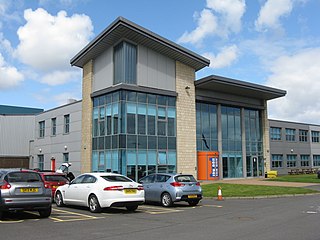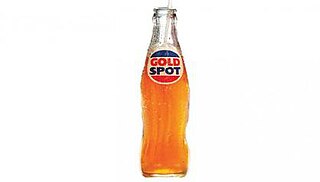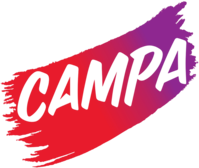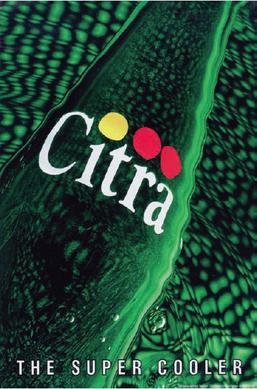
Coca-Cola, or Coke, is a cola soft drink manufactured by the Coca-Cola Company. In 2013, Coke products were sold in over 200 countries worldwide, with consumers drinking more than 1.8 billion company beverage servings each day. Coca-Cola ranked No. 94 in the 2024 Fortune 500 list of the largest United States corporations by total revenue. Based on Interbrand's "best global brand" study of 2023, Coca-Cola was the world's sixth most valuable brand.

Cola is a carbonated soft drink flavored with vanilla, cinnamon, citrus oils, and other flavorings. Cola became popular worldwide after the American pharmacist John Stith Pemberton invented Coca-Cola, a trademarked brand, in 1886, which was imitated by other manufacturers. Most colas originally contained caffeine from the kola nut, leading to the drink's name, though other sources of caffeine are generally used in modern formulations. The Pemberton cola drink also contained a coca plant extract. His non-alcoholic recipe was inspired by the coca wine of pharmacist Angelo Mariani, created in 1863.

Pepsi is a carbonated soft drink with a cola flavor, manufactured by PepsiCo. As of 2023, Pepsi is the second most valuable soft drink brand worldwide behind Coca-Cola; the two share a long-standing rivalry in what has been called the "cola wars".

Morarji Ranchhodji Desai was an Indian independence activist and politician who served as the Prime Minister of India between 1977 and 1979 leading the government formed by the Janata Party. During his long career in politics, he held many important posts in government such as Chief Minister of Bombay State, Home Minister, Finance Minister and 2nd Deputy Prime Minister of India.

Thums Up is a brand of cola. It was introduced in 1977 to offset the withdrawal of The Coca-Cola Company from India. The brand was later bought by Coca-Cola who re-launched it in order to compete against Pepsi to capture the market.

A.G. Barr plc, commonly known as Barr's, is a British soft drink and energy drink manufacturer based in Cumbernauld, North Lanarkshire, Scotland widely known for manufacturing the drink Irn-Bru. It is listed on the London Stock Exchange (LSE) and is a constituent of the FTSE 250 Index.

The Coca-Cola Company is an American multinational corporation founded in 1892. It manufactures, sells and markets soft drinks including Coca-Cola, other non-alcoholic beverage concentrates and syrups, and alcoholic beverages. Its stock is listed on the NYSE and is part of the DJIA and the S&P 500 and S&P 100 indexes.

Limca is an Indian multinational brand of lemon- and lime-flavoured carbonated soft drink made primarily in India and certain parts of the U.S. It contains 60 calories per 150ml can. The formula does not include fruit, relying instead on artificial flavours.

Gold Spot was an artificially orange-flavored carbonated soft drink created by Parle Products, introduced in 1952. It was named after the company’s successful Parle Gold Star peppermint product and was popular with kids. Gold Spot went over to Parle Bisleri as part of family partitions of the business.

Maaza is a Coca-Cola fruit drink brand from India and marketed in Africa, Eastern Europe and Asia. Its most popular drink is its mango fruit drink.

Campa Cola is a soft drink brand in India. It was a market leader in the Indian soft drink market in the 1970s and 1980s in most regions of India until the advent of the foreign players Pepsi and Coca-Cola after the liberalisation policy of the P. V. Narasimha Rao government in 1991.

Ajegroup, commonly known as AJE, is a Peruvian multinational company dedicated to the manufacture, distribution and sale of alcoholic and non-alcoholic beverages. The company was founded by the Añaños-Jerí Family in 1988 in Ayacucho, Peru. It is known for its flagship products Kola Real and Big Cola.

Bisleri International is an Indian multinational company which is best known for the eponymous brand of bottled water. The company was started in the 1970s by Ramesh Chauhan, and sells bottled water and soft drinks.

Citra was a clear lemon- and lime-flavoured soda sold in India in the 1980s and early 1990s. Citra was owned by Parle Bisleri. Along with other Parle brands, Thums Up, Limca, Gold Spot and Maaza, Citra was sold to Coca-Cola in 1993 in a deal that was reportedly worth $40 million. At the time of sale, the Parle brands together had a 60% market share in the aerated water industry. The brand was strong in South India. Citra was phased out by the year 2000 to make way for Coke's international brand, Sprite.
Rasna is a soft drink concentrate brand owned by Pioma Industries which is based in Ahmedabad, India. It was launched in mid-seventies but started gaining popularity in the eighties when the market was dominated by carbonated soft drinks like Thums up, Gold Spot and Limca. As of 2009, Rasna had a 93% market share in the soft drink concentrate market in India and as of 2011, the company had a turnover of ₹3.5 billion (US$42 million).

Sunkist is a brand of primarily orange-flavored soft drinks that launched in 1979. Sunkist primarily competes with The Coca-Cola Company's Fanta brand and Keurig Dr Pepper's Orange Crush brand.

The premiership of Morarji Desai extended from 24 March 1977 to 15 July 1979. In the 1977 Indian general election Morarji Desai led the Janata Party to victory against the Congress party. Upon taking office, Morarji Desai became the first Indian Prime Minister not belonging to the Congress party.

Duke and Sons Pvt. Ltd was an Indian manufacturing company based in Bombay. Established in 1889, Duke produced and marketed soft drinks. It was originally owned by the Pandole family, a well-known Parsi business name. In 1994, the company was acquired by Pepsi, which relaunched the Duke's brand in 2011 through its Indian subsidiary.

















